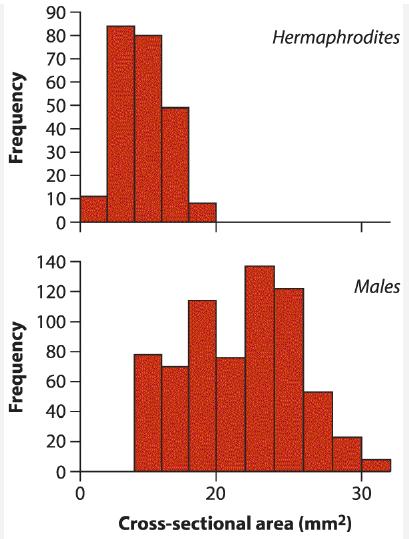The nematode Caenorhabditis elegans is often used in studies of development and genetics. This species is an
Question:
The nematode Caenorhabditis elegans is often used in studies of development and genetics. This species is an unusual animal, because most C. elegans individuals are hermaphrodites. That is, each worm has both ovaries and testes and acts as both a male and a female. Typically, a C. elegans individual will produce offspring by mating with itself. Very rarely, worms occur that have testes but not ovaries, and these males must mate with another individual to produce offspring. Therefore, it is important for the males to produce sperm that can compete well for access to eggs, and one way to do so might be to have larger sperm cells. LaMunyon and Ward (1998) measured the size of spermatids in 211 males and 700 hermaphrodites. Histograms of their findings are as follows:

The distribution of spermatid size was significantly different from a normal distribution, so the researchers decided to perform a Mann-Whitney U-test. They wanted a two-sided test of the difference in spermatid size between the two types of worms. They got as far as calculating the value for U, which was U = 35,910.
a. What were their hypotheses?
b. Find the P-value for their test.
c. Why might a Mann-Whitney U-test with these data be inappropriate for a test of the difference between medians?
Step by Step Answer:

The Analysis Of Biological Data
ISBN: 9781319226237
3rd Edition
Authors: Michael C. Whitlock, Dolph Schluter





